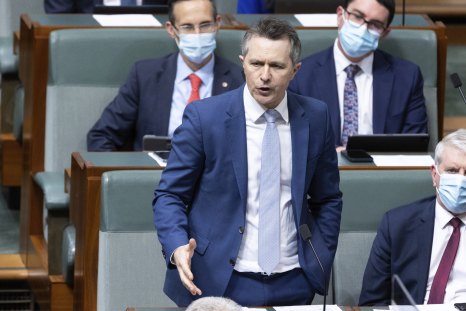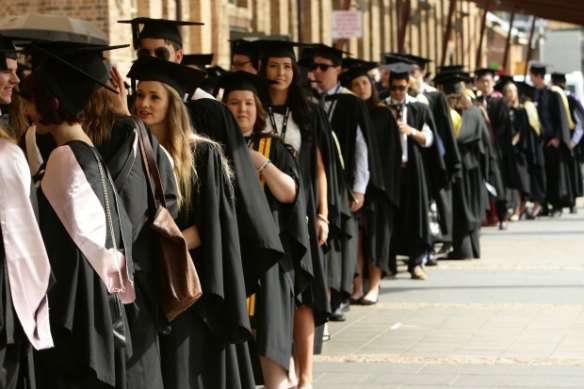
The doubling of university fees for some arts degrees has unfairly burdened women and Indigenous students most likely to study in these areas, according to a high-powered panel investigating whether HECS costs should be reduced to lower student debt.
Education Minister Jason Clare has asked the panel to review fees as part of what he is billing as the most substantial reforms to the sector in more than a decade.
Education Minister Jason Clare wants to boost outcomes for disadvantaged students hit by higher university fees.Credit:Alex Ellinghausen
In a speech in Canberra on Wednesday night, Clare emphasised his intent to boost outcomes for disadvantaged students, whom the panel found were let down by the Coalition’s doubling of university fees for some humanities degrees, as well as commerce and law.
“In consultation to date, the panel has heard widespread concerns about elements of this package and its impact on both students and institutions,” the panel wrote in a discussion paper released on Tuesday, clearing the path for the government to reverse the changes.
“A major issue raised with the panel is that the impact of changes to student contributions is not being felt evenly across different student groups, with female and First Nations students being most affected by the largest fee increases.
“This is because the fields of study with the highest increases in student contributions, such as humanities and communications, are fields in which these students are over-represented.”
Some education sector stakeholders told the higher education students should pay the same amount regardless of their degree, while others suggested the variation in fees – which can be in many thousands of dollars – should be reduced. The panel will deliver a final report later this year.
The Productivity Commission found that ramping up the price of arts degrees had not had a material effect on what people chose to study.
The panel noted the share of university costs paid for by students had increased from 20 per cent in 1989 to 47 per cent in 2024.
“While the average student has paid off their HELP debt in under 10 years, people on lower incomes may never pay it off and will make a small repayment from their already low incomes for their entire working life,” the paper said.
Andrew Norton, a higher education policy expert from Australian National University, said flattening the university fee structure would be beneficial, but it should not be one-size-fits-all.
“Some are advocating a flat system which is not crazy but also not the best system from my point of view,” Norton said.
Some level of variance between course fees was required, he said, but the question was how big the gap should be. For example, to create a scenario in which the average arts student and typical medicine student finished paying off their degree at the same time, the arts student’s fees would need to be lower because their future salary earnings would, on average, be lower.
In 2022, the Coalition government announced it would double the cost of degrees such as humanities and communications – which were not deemed of a high national priority – and cut by half fees for courses such as teaching and IT to encourage young people into these fields.
A recent Productivity Commission’s report found that “there is little evidence that differential subsidies effectively address skills shortages”.
In his speech, Clare told university vice-chancellors, whom he said were often competing against one another, to collaborate to drive future prosperity.
“If you are a child from a poor family you are less likely to go to pre-school, you are less likely to finish high school, and you are less likely to get a university degree,” he said.
Cut through the noise of federal politics with news, views and expert analysis from Jacqueline Maley. Subscribers can sign up to our weekly Inside Politics newsletter here.
Most Viewed in Politics
From our partners
Source: Read Full Article

